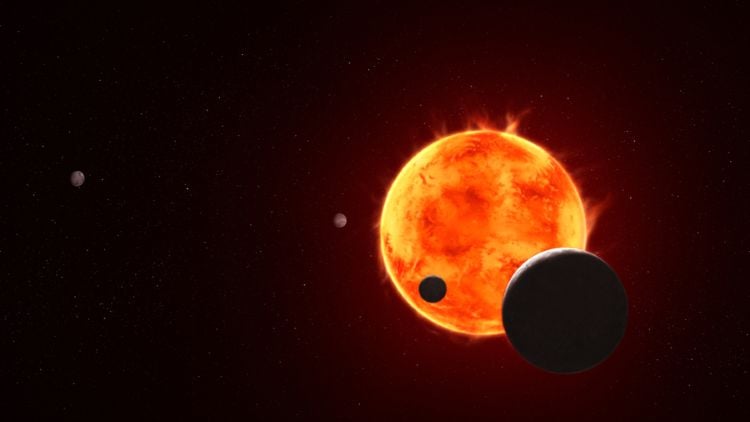Science
Scientists Investigate Microbial Biosignatures in Exoplanet Clouds

Researchers are exploring the possibility of identifying microbial life in the clouds of exoplanets. A recent manuscript outlines a study that examines how biosignatures of airborne microbes can be detected in the atmospheres of distant planets. This research could lead to innovative techniques for discovering life beyond Earth, potentially altering our understanding of where life can exist.
The team conducted laboratory experiments using seven microbial strains sourced from Earth’s atmosphere. These included species such as Modestobacter versicolor, Roseomonas vinacea, and Micrococcus luteus, among others. By employing spectroscopy, the researchers analyzed the light reflected by these microbes to determine if their unique spectral features could serve as indicators of life in exoplanetary clouds.
The findings revealed distinct biosignatures for each microbial strain, suggesting that these signatures could be instrumental in identifying life-supporting ecosystems on other planets. The authors stated, “Here, we present an additional path for searching for life on Earth-like exoplanets: the search for biopigments as signs of life in clouds.” They emphasized that this research could help define critical spectral references for upcoming missions aimed at detecting biosignatures in the atmospheres of Earth-like exoplanets.
Historical Context and Future Missions
The study draws inspiration from earlier work conducted by renowned astronomer Dr. Carl Sagan and astrophysicist Dr. Ed Salpeter in 1976. They proposed the existence of various types of organisms within Jupiter’s atmosphere, hypothesizing categories like “Sinkers,” “Floaters,” “Hunters,” and “Scavengers.” This historical perspective underscores the long-standing interest in the potential for life in planetary atmospheres.
The research is particularly timely as the Habitable Worlds Observatory (HWO) is set to launch in the 2040s. This planned space telescope aims to utilize spectroscopy to analyze 25 habitable exoplanets for signs of life. The study suggests that the biosignatures identified could be detectable by HWO, thereby enhancing our search for life beyond our solar system. In addition to exoplanet research, HWO will explore galaxy formation, star evolution, and various solar system objects.
Recent Discoveries and Ongoing Research
The James Webb Space Telescope (JWST) has already made significant strides in this area, examining exoplanet atmospheres such as those of WASP-39 b and WASP-17 b, located approximately 700 and 1,324 light-years from Earth, respectively. Through spectroscopy, JWST detected water, carbon dioxide, and carbon monoxide in the atmosphere of WASP-39 b, while WASP-17 b was found to contain quartz particles at high altitudes.
Recently, JWST published findings regarding the atmosphere of TRAPPIST-1 e, an Earth-sized exoplanet in the habitable zone of its star. While the studies did not provide definitive evidence of an atmosphere, they highlighted the need for further research to confirm its existence. The TRAPPIST-1 system is situated around 41 light-years from Earth and includes seven rocky planets, three of which are believed to be in the habitable zone.
This ongoing exploration raises intriguing questions about the potential for microbial life in exoplanet atmospheres. As scientists continue to refine their methods and tools for detecting biosignatures, the future may reveal new insights into the existence of life beyond our planet. The quest for understanding life in the universe remains a dynamic field, promising exciting developments in the years ahead.
-

 Technology5 months ago
Technology5 months agoDiscover the Top 10 Calorie Counting Apps of 2025
-

 Technology2 weeks ago
Technology2 weeks agoOpenAI to Implement Age Verification for ChatGPT by December 2025
-

 Health3 months ago
Health3 months agoBella Hadid Shares Health Update After Treatment for Lyme Disease
-

 Health3 months ago
Health3 months agoErin Bates Shares Recovery Update Following Sepsis Complications
-

 Health3 months ago
Health3 months agoAnalysts Project Stronger Growth for Apple’s iPhone 17 Lineup
-

 Technology5 months ago
Technology5 months agoDiscover How to Reverse Image Search Using ChatGPT Effortlessly
-

 Technology3 months ago
Technology3 months agoElectric Moto Influencer Surronster Arrested in Tijuana
-

 Technology2 months ago
Technology2 months agoDiscover 2025’s Top GPUs for Exceptional 4K Gaming Performance
-

 Technology5 months ago
Technology5 months agoMeta Initiates $60B AI Data Center Expansion, Starting in Ohio
-

 Technology5 months ago
Technology5 months agoRecovering a Suspended TikTok Account: A Step-by-Step Guide
-

 Health5 months ago
Health5 months agoTested: Rab Firewall Mountain Jacket Survives Harsh Conditions
-

 Lifestyle5 months ago
Lifestyle5 months agoBelton Family Reunites After Daughter Survives Hill Country Floods









